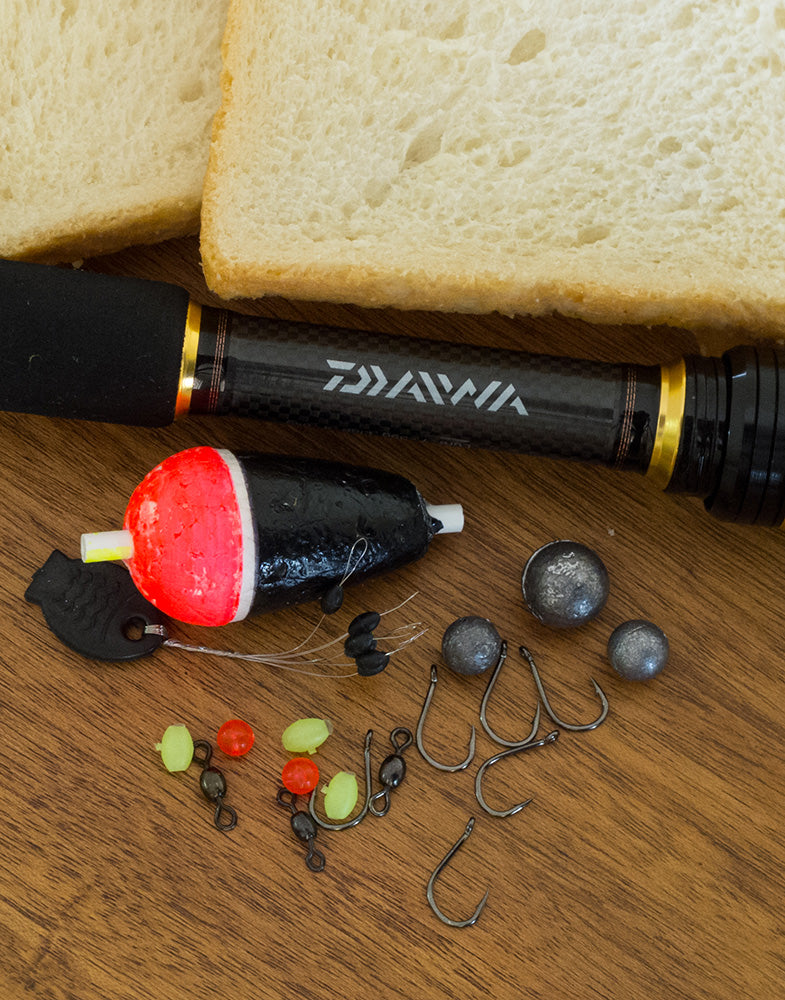Bread Rocks
Posted on
by Jamie Robley.
Autumn and moving into early winter is a fantastic part of the year to round up a feed of tasty, not to mention hard fighting fish from our east coast rocks. Old favourites like bream, luderick and drummer are at the top of the list, but others ranging from silver trevally to snapper are all possible candidates.
Having fished the rocks for too many years to remember, I’ve enjoyed success with all kinds of bait, lures and fly. If pushed to nominate the single most reliable way of catching a few fish from the rocks though, I reckon one bait really stands out from the pack – good old white bread!

There are a number of reasons why I love using bread as bait. To begin with you can buy bread just about anywhere, at any time, so there’s no need to hunt around or wait for the bait shop to open. Unlike many other types of commercially available bait, bread is also very inexpensive.
Bread is a nice, clean sort of bait that won’t spill smelly juices in the back of the car or leave an unpleasant odour in your bait bucket, freezer or fridge. Fresh bread is the best stuff for bait, but it can also be frozen and used at a later date. If it’s not quite up to scratch when thawed out again, it will still be perfectly fine to use as berley.

For an average few hours at the rocks, I’ll normally bring along two to four loaves; half for berley and half for bait. In fact most of the time two loaves is quite sufficient. It’s important to make sure the bread is securely tucked away in a bag or bucket, as pesky birds like seagulls and crows love it as much as fish and they’ll quickly zoom in and snatch some when your back is turned.
Once a suitable spot is picked out, the first step is to mash up a couple of slices with some sea water, so it turns into a pulp, leaving no large lumps. Thrown close in around the base of the rocks, this will get the ball rolling, spreading scent through the water, which bream, luderick or other fish will soon sniff out.
Bread works well when suspended under a small bobby style float, but sometimes it’s fine just to use a hook and no sinker or a tiny pea sized ball sinker, sliding freely on the line, up to the hook. Which way to go largely depends on the spot you’re fishing. If it’s shallow, with lots of snaggy rock or reef then a small float is usually the better option.

Suitable hook sizes are between 2 and 6 or even down to a size 8 if luderick, garfish or mullet are the main aim. A variety of different hook patterns work, as long as the hook point is sharp and left slightly exposed as a piece of bread is pinched over it.
Depending on how well any resident fish may be responding to the berley, a rough guideline is to throw in a handful or so every ten to twenty minutes. If too many little pickers like toads are moving in then back off with the berley for a while and cast baits further out, away from the little bait thieves.
Most of the time you’ll find fish right in close to the rocks, under some whitewash. Occasionally though, it may be better to cast out over any small patch of reef that you can see. Sometimes it may take a little experimentation before finding a few fish, so be patient and cast around a bit.

In recent times I’ve been using a Freams 3000, teamed up with a Lateo 96ML and 8lb braid. This really is a remarkable outfit and perfectly suited to this light style of rock fishing. However, most 2500 to 4000 sized threadline reels, matched with a light action 2.7 to 3 metre rod will do a fine job.
If you haven’t tried using bread, as bait and berley at your local rock ledge or platform, give it a go this autumn or winter. It’s an easy, cheap and productive way to get into some excellent fishing.

 Wishlist
Wishlist

